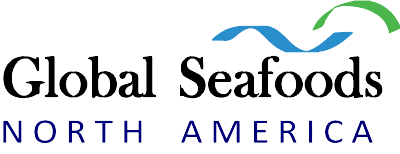Seafood Market Forecast: Trends to Expect in 2025

Seafood Market Trends to Expect
Seafood plays a vital role in global food security, contributing to the diets of billions of people. According to the Food and Agriculture Organization (FAO), per capita seafood consumption reached 20.5 kg in 2022, and demand continues to grow as consumers prioritize healthy and protein-rich diets.
The seafood market encompasses wild-caught fish, aquaculture products, and processed seafood, collectively contributing to a multi-billion-dollar industry. As we look toward 2025, understanding the trends shaping this market is essential for businesses, investors, and consumers alike.
Key Market Drivers and Influencers
Several factors influence the global seafood market:
- Rising Population: Global seafood consumption is expected to grow by 5% annually.
- Health Trends: Consumers increasingly prefer omega-3-rich seafood for its heart and brain health benefits.
- Sustainability Concerns: Sustainable sourcing practices are becoming critical for market players.
The Role of Aquaculture in Seafood Production
Aquaculture, or fish farming, accounts for over 50% of the seafood consumed globally. Innovations in this field include:
- Genetic Selection: Enhancing fish yields through selective breeding.
- Closed-Loop Systems: Reducing environmental impact.
- Integrated Multi-Trophic Aquaculture (IMTA): Combining multiple species to mimic natural ecosystems.
According to the World Bank, aquaculture is projected to grow 37% by 2030, reinforcing its pivotal role in meeting seafood demand.
Sustainability Initiatives Transforming the Market
Sustainability remains a cornerstone of the seafood industry. Key initiatives include:
- Marine Stewardship Council (MSC) Certification: A global standard for sustainable fishing.
- Traceability Technologies: Blockchain systems ensure transparency in sourcing.
- Reduction in Bycatch: Advanced nets and sonar reduce the unintended capture of non-target species.
"Protecting the oceans isn't just a responsibility, it's an imperative for our survival," says Sylvia Earle, marine biologist and oceanographer.
Technological Innovations in Seafood Supply Chains
The seafood supply chain is undergoing digitization. Key advancements include:
- Cold Chain Technology: Preserving freshness during transport.
- AI-Driven Inventory Management: Reducing food waste.
- Online Platforms: Simplifying direct-to-consumer sales, like Global Seafoods.
Consumer Preferences: What’s Changing?
Modern consumers are reshaping the seafood market:
- Preference for Convenience: Demand for ready-to-cook and frozen options is rising.
- Sustainability Awareness: Shoppers are seeking eco-friendly certifications.
- Premium Products: Items like red caviar and king crab are gaining popularity.
The Rise of Premium and Exotic Seafood Products
Luxury seafood items are witnessing a surge in demand. Products such as sturgeon black caviar and dry-aged fish appeal to affluent consumers seeking unique culinary experiences.
Challenges Facing the Global Seafood Market
The seafood market faces numerous challenges, including:
- Overfishing: Depleting fish stocks globally.
- Regulatory Compliance: Meeting complex international trade laws.
- Rising Costs: From fuel prices to labor shortages.
Market Insights by Region
Key regional trends include:
- Asia-Pacific: Leading in aquaculture production.
- North America: High demand for sustainable and premium seafood.
- Europe: Strong emphasis on traceability and ethical sourcing.
The Role of E-commerce in Seafood Sales
The rise of platforms like Global Seafoods demonstrates the growing importance of e-commerce in seafood distribution. Digital channels offer:
- Greater accessibility.
- Transparent sourcing.
- Customization options for consumers.
Impact of Climate Change on Seafood Availability
Climate change affects seafood production through warming oceans, acidification, and disrupted ecosystems. Adaptive strategies include:
- Diversifying aquaculture species.
- Investing in resilient farming systems.
Seafood Trends for the Restaurant Industry
Restaurants are adapting to consumer demand by offering:
- Sustainable menu options.
- Innovative seafood dishes using caviar and frozen fish.
Predictions for the Future of the Seafood Market
The future of the seafood market looks promising, with advancements in technology, sustainability practices, and consumer awareness driving growth. By 2025, expect further integration of AI, blockchain, and robotics in seafood production and distribution.
Expert Opinions on Seafood Market Growth
Dr. Jane Lubchenco, a renowned marine ecologist, says, "Investing in sustainable seafood is investing in the future of our planet and food systems."
Frequently Asked Questions (FAQs)
What is the seafood market forecast for 2025?
The market is expected to grow significantly, driven by rising demand, aquaculture innovations, and sustainability initiatives.
How does sustainability impact the seafood industry?
Sustainability ensures long-term viability by protecting marine ecosystems and promoting ethical practices.
What role does aquaculture play in seafood production?
Aquaculture accounts for over 50% of global seafood supply and is a key solution to overfishing.
What are the challenges facing the seafood market?
Challenges include overfishing, climate change, and regulatory complexities.
Which seafood products are trending in 2025?
Premium products like king crab and caviar are in high demand.
How is technology transforming seafood distribution?
Technologies like blockchain and AI are enhancing transparency, efficiency, and customer experience.
Explore our curated collection of premium seafood products here:
Subscribe to our YouTube Channel for more updates:
Global Seafoods on YouTube
Also in News

How to Make Sea Bream Sushi With Dry-Aged Tuna & Crab Roll — Step-by-Step With Chef Joshua
A complete guide to making Sea Bream sushi at home, including filleting, curing, slicing, and building a Dry-Aged Tuna & Crab sushi roll. Chef Joshua shares professional tips for restaurant-quality results.

Boiled Crab for Game Night: Everything You Need for a Perfect Seafood Party
Take your game night to the next level with a Boiled crab party. Learn the best recipes, cooking tips, and hosting hacks for a memorable seafood feast.

Boiled Crab for Date Night: A Romantic Guide to the Perfect Seafood Feast
Make your next date night unforgettable with a romantic Boiled crab experience. This guide covers everything you need to know, from ambiance to the best crab varieties.
